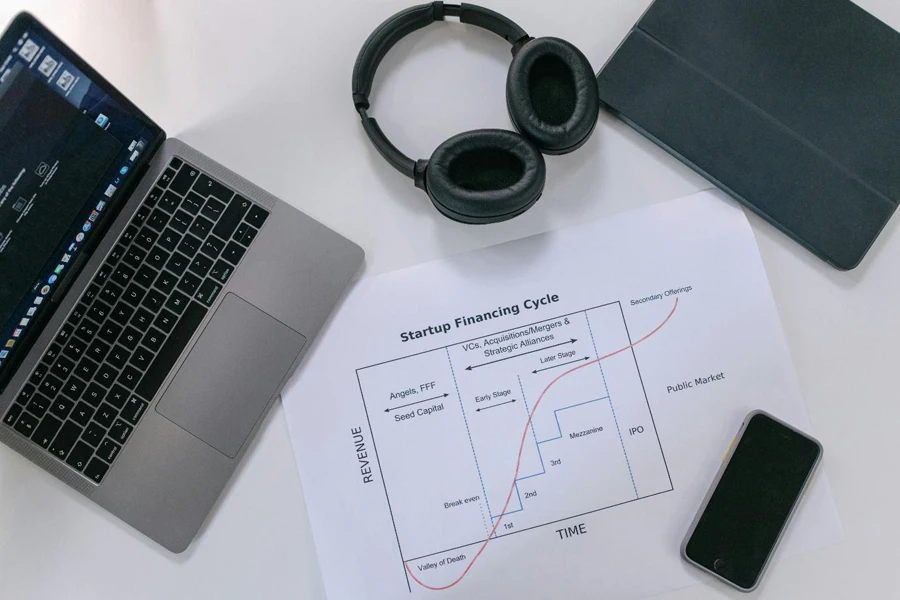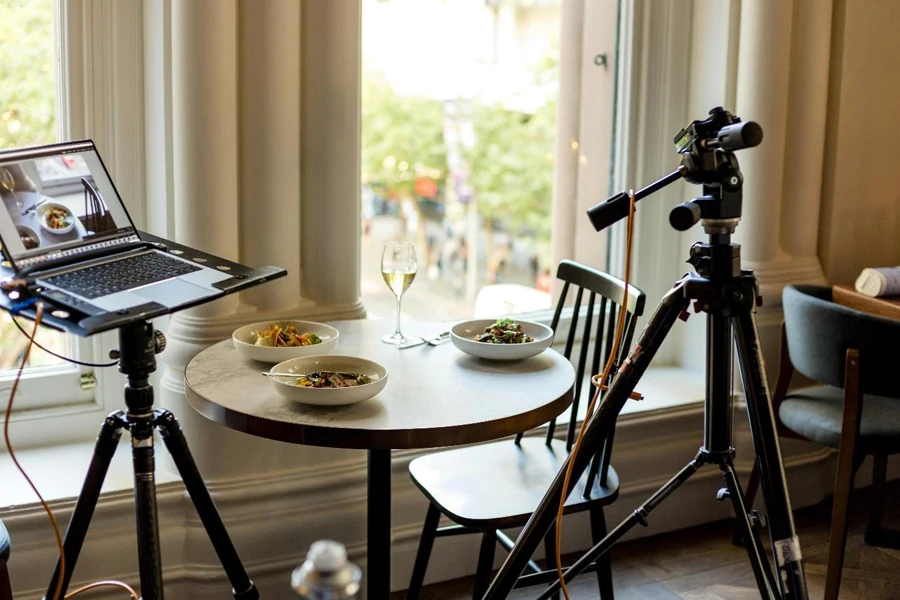Tripods have become important accessories in photography and videography as they provide the stability to professionally capture clear and high-quality images and videos. The tripod market is growing quickly due to technological advancements and the increasing popularity of social media platforms catering to content creators’ evolving needs. As manufacturers enhance tripods with more flexible designs to meet consumer demands, innovation in the industry continues to thrive. Staying current on market trends is essential for buyers looking to make sound investments in top-notch equipment. This article explores the newest advancements and popular models influencing the world of tripods today and offers guidance to help make smart buying choices.
Table of Contents
● Market overview: current trends shaping the tripod industry
● Revolutionizing tripod design: key technology innovations
● Leading the charge: top-selling tripod models setting trends
● Conclusion
Market overview: current trends shaping the tripod industry

Expanding market size and growth
The worldwide market for camera tripods is rising due to the growing need for top-notch photography and videography gear. As of 2023, the value of the camera market stood at USD 0.41 billion. According to Market Research Future, it is expected to reach USD 0.51 billion by 2032. This signifies a forecasted growth rate (CAGR) of 2.39% from 2024 to 2032. The growth of this market is strongly connected to the surge in popularity of media and blogging platforms, as the need for content creation tools has seen a notable uptick.
Social media impact and regional dynamics
The rise of media platforms like Instagram and TikTok has driven the increasing popularity of tripods among content creators and influencers alike. The desire for top-notch image and video quality has led to a surge in demand for both travel and studio-grade tripods. North America continues to lead the market thanks to its strong consumer base and the existence of major tripod manufacturers. The Asia Pacific area is projected to experience growth fueled by a growing fascination with photography and videography along with the expanding accessibility of top-notch tripods.
Market segmentation and consumer preferences
The market is divided into three categories of tripods: travel tripods are popular due to their portability and ease of use; studio tripods cater to professionals needing setups for indoor photography; and pocket tripods provide compact solutions for various needs. Consumers nowadays are leaning towards functional tripods that strike a good balance between being easy to carry around and practical to use. This trend is pushing advancements in how these tripods are designed and the materials used in making them.
Revolutionizing tripod design: key technology innovations

Evolution in tripod design: From traditional to innovative shapes
The shift from traditional styles to sleek and space-saving angular and triangular setups represents a major leap in tripod innovation. It features a triangular column and angled legs that allow the tripod to fold to a mere 3.25 inches in diameter, approximately the size of a water bottle. This fresh design cuts its footprint by 50% compared to conventional cylindrical designs and retains its maximum height of 58.5 inches when fully stretched out. Space-efficient layouts like these are vital for individuals looking to reduce bulk without compromising functionality.
Multi-functional designs redefining versatility
Tripod stands are becoming more versatile as they can easily switch between setups. Take the Chronicle Tripod, for instance; its middle column can be detached to turn into a tripod and its legs can transform into a monopod. This innovative design features a ball head that also serves as a phone holder for effortless switching between capturing photos with cameras and smartphones. The Chronicle Tripod can support up to 22 lbs (10 kg), making it suitable for DSLR cameras with heavy lenses and versatile enough to adjust to various shooting situations effortlessly.
Material advancements enhancing portability

The introduction of carbon fiber has completely transformed how tripods are made by providing a combination of strength and a lightweight design that is perfect for professionals on the move. Carbon fiber tripods such as the Benro Rhino have legs measuring 18mm in diameter at their narrowest points while maintaining firmness and durability. Despite being light at 1.9 kg in weight, the Benro Rhino can handle hefty loads of up to 30 lbs (13.6 kilograms), making it suitable for complex setups. The diminished vibration from carbon fiber legs captures clearer images, particularly in situations with extended exposure or difficult environments.
Compact head designs improving functionality
In recent years, tripod head design has been geared towards being more compact while still delivering functionality. The smaller ball heads in tripods often come with a tension dial that enables full 360-degree panning and 90-degree tilting capabilities while maintaining a sleek design that adds to the tripod’s overall ease of portability. For instance, despite its compact form factor, the ball head on The Peak Design Travel Tripod is a compact option for those on the go. It can handle loads of up to 20 lbs (9 kg), ensuring stability with heavy camera setups. These small heads are designed to fit inside the tripod when folded up to save space for storage and transportation purposes.
Leading the charge: top-selling tripod models setting trends

Peak Design Travel Tripod
The Peak Design Travel Tripod has raised the bar in the market with its compact design and creative features. The unique angular legs and triangular center column make it super easy to fold into a small size that’s perfect for photographers and videographers on the go. Even though it’s so compact when folded up tight like a clamshell, this tripod stretches out to reach a height of 58 inches. It is strong enough to hold up to 20 lbs (about 9 kg), so it’s ready for hefty DSLRs and big lenses without sweat. A notable aspect is the discreet placement of the phone holder in the stand, which offers extra flexibility for individuals who alternate between a camera and a smartphone for photography purposes. The product’s capability to blend ease of transport with practicality has garnered popularity among photographers who specialize in travel photography.
ProMaster Chronicle Tripod
The ProMaster Chronicle Tripod is becoming popular because of its versatility. It can be converted into a tabletop tripod and handheld stabilizer setup. Its design features the Flexor column, which can be used separately as a mini tripod. The ball head can also be turned into a phone mount, making it perfect for content creators who require adjustments for varying shooting situations. The Chronicle’s ability to carry up to 22 pounds (10 kg) allows it to accommodate high-quality camera gear effortlessly. Its compactness and versatility have made it a top choice for travel photographers and vloggers seeking an all-in-one option.
Benro Rhino Carbon-Fiber Tripod
The Benro Rhino Carbon Fiber Tripod has gained popularity as a top choice in the market for its durable design that sets new standards in the industry. Weighing 1.9 Kg and constructed from carbon fiber material, the Rhino ensures a robust structure that holds up to 30 lbs (13.6 kg). Outdoor photographers, in particular, appreciate this tripod for its durability in challenging environments and its lightweight nature, making it easy to carry around. The slim legs of the tripod are as thin as 18mm but remain sturdy to minimize shaking when taking photos in tricky situations, which is a key factor for getting clear shots. Thanks to its robust build and strong load-bearing capacity, the Rhino stands out as a top choice for professionals who value both ease of transport and steadiness in their equipment.
Manfrotto Element II and other budget-friendly models
The Manfrotto Element II stands out by providing stability and flexibility at a reasonable price point. Weighing 1.6 kg, it is convenient to carry and offers solid support for mirrorless cameras and DSLRs alike, with its twist-lock legs ensuring steady positioning even in windy conditions. It boasts a maximum height of 64 inches, suitable for diverse shooting settings. Moreover, the Benro Slim and Job GorillaPod lineups remain popular among buyers seeking flexible solutions for lightweight camera gear or smartphones. This indicates a rising interest in accessible alternatives that maintain quality and features despite the dominance of premium tripods in the professional sector.
Conclusion

The future of tripods is shaped by technological advancements and changing market demands towards increased portability, durability, and versatility in their usage scenarios. The shift towards compact designs and utilizing lightweight and strong materials such as carbon fiber enable tripods caters better to the varied requirements of contemporary photographers and videographers. These progressions are not just enhancing the experience for users, they are also expanding the scope of uses across different settings, ranging from travel photography to professional studio environments. There are always advances in this field that are raising the bar and providing photographers and videographers with the ideal equipment to shoot top-notch content in various settings.




